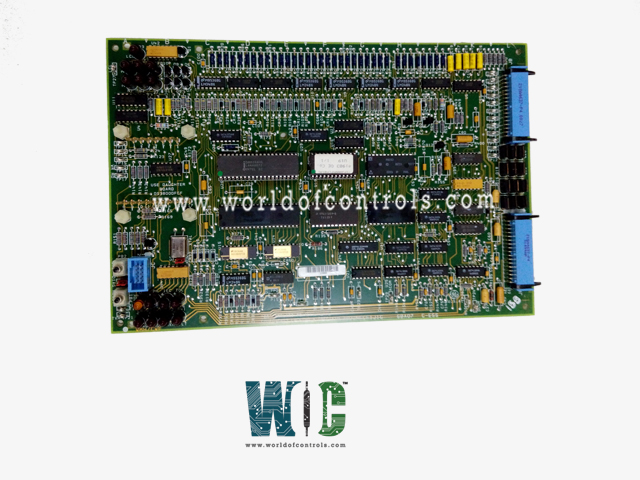
World Of Controls understands the criticality of your requirement and works towards reducing the lead time as much as possible.
DS3800NFCF1J - Firing Circuit Module is available in stock which ships the same day.
DS3800NFCF1J - Firing Circuit Module comes in UNUSED as well as REBUILT condition.
To avail our best deals for DS3800NFCF1J - Firing Circuit Module, contact us and we will get back to you within 24 hours.
SPECIFICATIONS:
Part Number: DS3800NFCF1J
Manufacturer: General Electric
Series: Mark IV
Product Type: Firing Circuit Module
Board Size: 14.75 cm High x 17.5 cm
Repair: 3-7 Days
Weight: 2.00 lbs
Country of Origin: USA
Availability: In Stock
FUNCTIONAL DESCRIPTION:
DS3800NFCF1J is a Firing Circuit Module manufactured and designed by General Electric as part of the Mark IV Series used in GE Speedtronic turbine control systems. A firing circuit module is an essential component in power electronics designed to control high-power loads precisely. It is commonly used in systems requiring power regulation, such as those involving thyristors. The module controls the firing angle of these components, allowing for accurate adjustments of power and voltage delivered to a load. It functions in various applications, including solid-state relays, motor speed control, and temperature regulation systems. By managing the timing and phase angle of the input AC voltage, the module ensures efficient power delivery while also incorporating protection features to guard against overcurrent and voltage spikes. Key elements of a firing circuit module often include optoisolators for signal isolation, triggering circuits for generating timing signals, and a power supply to power the module and its components.
FUNCTIONS:
WOC has the largest stock of OEM replacement parts for GE Speedtronic Control Systems. We can also repair your faulty boards and supply unused and rebuilt boards backed up with a warranty. Our team of experts is available round the clock to support your OEM needs. Our team of experts at WOC is happy to assist you with any of your automation requirements. For pricing and availability on parts and repairs, kindly contact our team by phone or email.
What is a firing circuit module?
A firing circuit module is a component used in power electronics to control the timing and phase angle of power delivery to a load. It regulates the firing of thyristors to manage high-power systems efficiently.
What are the main functions of a firing circuit module?
The main functions include timing control for triggering power components, phase control for adjusting the AC voltage, power regulation to control the amount of power delivered, and protection against overcurrent and voltage spikes. It also provides signal isolation to protect sensitive electronics.
How does a firing circuit module control power delivery?
By adjusting the firing angle of thyristors, the module regulates the phase angle of the input AC voltage, which in turn controls the power delivered to the load.